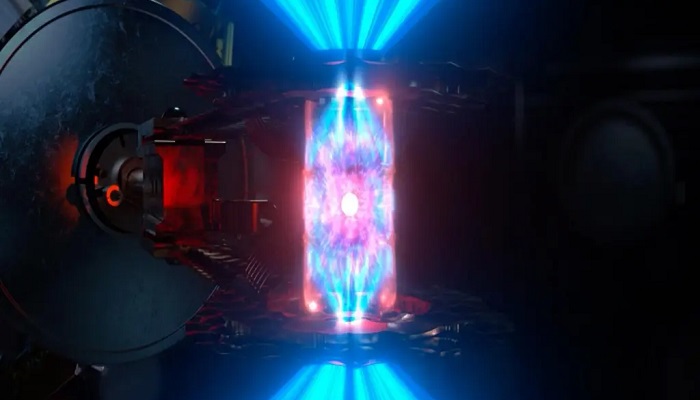Officials from the US Department of Energy revealed on December 20, a nuclear fusion breakthrough: For the first time, US researchers outperformed the amount of laser energy needed to run the experiment by producing more fusion energy.
A so-called net energy gain is a significant step in the decades-long quest to harness nuclear fusion, the reaction that occurs when two or more atoms are merged together, as a source of clean, inexhaustible energy.
The experiment supplied the target with 2.05 megajoules of energy and created 3.15 megajoules of fusion energy in return, producing more than 50% more energy than was supplied. It is the first time an experiment has produced a significant increase in energy.
Energy Secretary Jennifer Granholm referred to the development as a milestone.
For the first time, Granholm stated that ignition allows them to duplicate some circumstances that are only present in the stars and sun. This accomplishment brings them a sizable proportion closer to the prospect of a society powered by abundant, zero-carbon fusion energy.
According to Granholm, researchers at Livermore and other national labs are working to advance the US’s transition to clean energy while preserving a nuclear deterrent without conducting nuclear tests.
This is how America leads, and they are only getting started, according to Granholm. They could employ fusion energy to provide clean electricity, transport fuels, power, heavy industrial, and so much more if they were to progress the technology. Director, White House Office of Science and Technology Policy Arati Prabhakar discussed how she spent three months working on the nuclear fusion project at Lawrence Livermore in her early career as a young scientist.
Prabhakar thought back on the countless generations of scientists who had contributed to the development of nuclear fusion. Generations of people working toward this goal, not just one generation development of nuclear fusion. She claimed that generations of people were working toward this goal, not just one generation. It has been a century since scientists discovered that the sun and all other stars were undergoing fusion. They couldn’t reproduce that fusion activity in a lab until so many various types of developments in that century finally came together.
Why an increase in energy is important
Experts warn that they are still a very long way away from having nuclear fusion power the electrical grid. According to a fusion expert from the engineering department at the University of Cambridge, Tony Roulstone, the US research, while revolutionary, only generated enough energy to boil roughly 2.5 gallons of water.
Even though it might not seem like much, the experiment is nonetheless extremely important because it showed that scientists can generate more energy than they did at the beginning. Although there are still many steps to be taken before this may be commercially viable, experts think that is a significant obstacle to overcome with nuclear fusion.
The director of Lawrence Livermore National Laboratory, Kim Budil, referred to her lab’s achievement as an essential building block to ultimately establishing nuclear fusion as a source of electricity. Before it is prepared for commercial usage, she predicted that a few decades more effort will be required.
Several decades of research on the underlying technology could put them in a position to build a power plant, Budil told reporters. He thinks it’s going into the foreground, probably with focused effort and money. That timeframe can get closer with serious investment and real focus.
Although earlier fusion tests, such as one conducted in the UK, produced more energy, the power increase was not nearly as large. For example, earlier this year, researchers in the UK produced a record-breaking 59 megajoules of energy, which is around 20 times more than the project’s output from the US. However, the UK effort only managed to gain less than 1 megajoule of energy.
Anne White, chair of MIT’s Department of Nuclear Science and Engineering, told CNN that neither the US-based programmes nor the UK-based ones had the hardware and processes in place to convert fusion neutrons to power.
According to Budil, the US laser-based system and the European magnet-based fusion initiatives can cooperate to progress fusion technology. The federal government, according to Granholm, also welcomes private fusion investment. Prior to nuclear fusion power being able to turn on the lights and heat the water, Budil emphasised that there are still numerous steps to be taken in the ensuing decades.
He does not want to give people the impression that they are going to connect the National Ignition Facility to the grid, she continued, because that’s not how it works.
Roulstone noted, however, that even the most ambitious large-scale nuclear energy projects had to begin somewhere: in 1942, researchers in Chicago operated the first fission nuclear reactor for only 5 minutes during its initial run; 15 years later, the first nuclear power plant in the United States began operating in Pennsylvania.







































